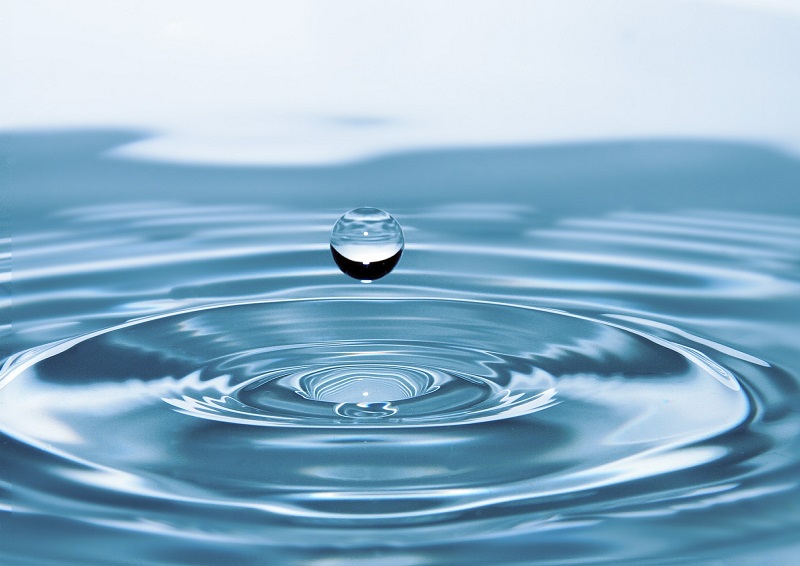Water
Water is a chemical compound that is essential for all known forms of life. As a transparent, tasteless, odourless and almost colour-less substance, it covers 71% of the Earth’s surface and is the main constituent of rivers, lakes oceans and so on.
The chemical formula of water is H2O. Each molecule contains one oxygen atom and two hydrogen atoms. Water, in the strict sense, refers to the liquid state of the substance, but it can also be used to refer to the solid state (ice) and the gaseous state (steam or water vapour).
Water moves continuously through the water cycle which comprises:
- Evaporation and transpiration.
- Condensation.
- Precipitation.
- Run-off.
In order to sustain human and other forms of life, safe drinking water is essential, with good sanitation being the single most important determinant of public health. Sanitation has improved globally in recent decades, but it is estimated that more than 2.5 billion people still do not have access to adequate sanitation and 1 billion do not have access to safe water. Forecasts suggest that by 2025, over half the world’s population will be vulnerable in some way related to water supply or sanitation.
Water supply is the provision of water by utilities organisations, typically using a pump and pipe system.
Typically, the first stage of the water supply process is the collection of rainwater in reservoirs, either from rivers or streams or from groundwater. This is pumped to water treatment works where it undergoes a number of processes, the first of which is screening which ensures the removal of large elements such as branches and vegetation. Following this, flocculation takes place – the adding of a solution which makes particles larger and easier to remove. Additional filters are subsequently used, such as:
- Rapid gravity filter: Water is passed through a tank of coarse sand which traps particles.
- Slow sand filter: Water is slowly filtered through large beds of fine sand.
Testing of the water’s purity is carried out several times before a tiny amount (less than one milligram per litre) of chlorine is added to kill any organisms or bacteria which may remain.
Once treatment is complete, the water is stored in covered reservoirs before being pumped out via a distribution network of pipes and pumping stations.
Designing Buildings has a number of articles relating to water:
- Approved Document G
- Blackwater.
- Bound water.
- Chilled water.
- Clarified water.
- ECA Water Scheme.
- Firefighting water.
- Flood and Water Management Act.
- Foul water.
- Greywater.
- Groundwater.
- Groundwater control in urban areas.
- Hydroinformatics.
- Mains water.
- Moisture.
- Passive water efficiency measures.
- Public water supply.
- Rainwater harvesting.
- Rainwater.
- Rainwater goods.
- Sustainable urban drainage systems.
- Sustainable water.
- The Dublin Statement.
- The State of the Environment: Water Resources.
- Trading systems for water resources.
- Types of water.
- Urban water systems management: A data analytics approach EP 105.
- Water Act 2014.
- Water closet
- Water consumption
- Water conservation
- Water efficiency – The next big sustainability issue?
- Water engineering
- Water framework directive.
- Water Industry Act 1991.
- Water industry pressures.
- Water investment.
- Water pollution.
- Water safety plan WSP.
- Water source heat map
- Water source heat pumps
- Water table.
- Water technology list
- Water transfers and interconnections.
- Water vapour.
- Why innovation is needed in the water sector.
- World Water Day.
Featured articles and news
Infrastructure that connect the physical and digital domains.
Harnessing robotics and AI in challenging environments
The key to nuclear decommissioning and fusion engineering.
BSRIA announces Lisa Ashworth as new CEO
Tasked with furthering BSRIA’s impressive growth ambitions.
Public buildings get half a million energy efficiency boost
£557 million to switch to cleaner heating and save on energy.
CIOB launches pre-election manifesto
Outlining potential future policies for the next government.
Grenfell Tower Inquiry announcement
Phase 2 hearings come to a close and the final report due in September.
Progress from Parts L, F and O: A whitepaper, one year on.
A replicated study to understand the opinion of practitioners.
ECA announces new president 2024
Electrical engineer and business leader Stuart Smith.
A distinct type of countryside that should be celebrated.
Should Part O be extended to existing buildings?
EAC brands heatwave adaptation a missed opportunity.
Definition of Statutory in workplace and facilities management
Established by IWFM, BESA, CIBSE and BSRIA.
Tackling the transition from traditional heating systems
59% lack the necessary information and confidence to switch.
The general election and the construction industry
As PM, Rishi Sunak announces July 4 date for an election.
Eco apprenticeships continue help grow green workforce
A year after being recognised at the King's coronation.
Permitted development rights for agricultural buildings
The changes coming into effect as of May 21, 2024.






















